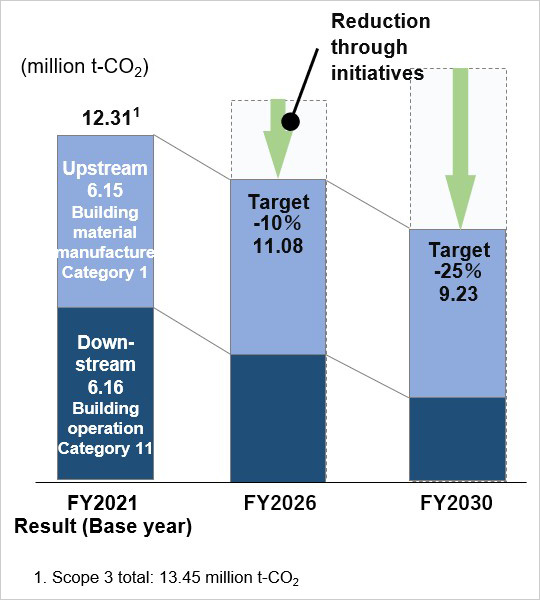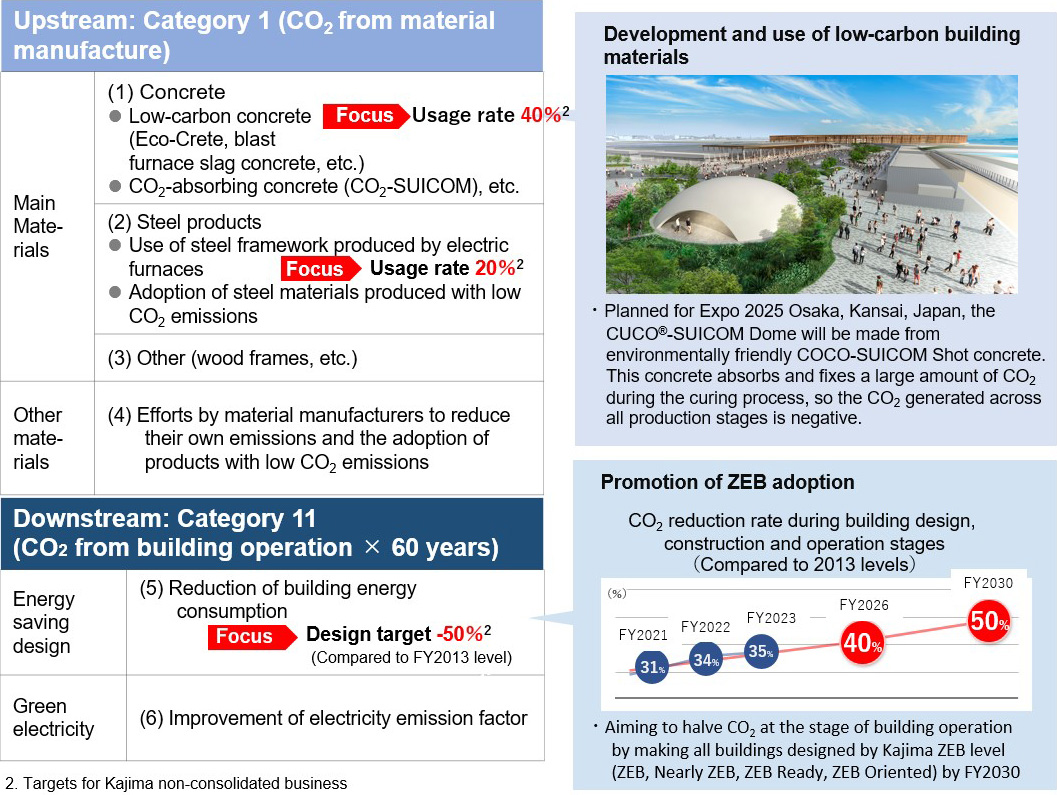Carbon Neutrality
The lifecycle CO2 emissions of buildings fall into three main categories: upstream supply chain emissions, primarily from the manufacture of construction materials; Kajima’s own emissions, mainly from construction work; and downstream supply chain emissions, primarily from the operation of the completed building.
Although CO2 emitted during construction (Scope 1 and 2) accounts for only about 3% of total lifecycle emissions, as a construction company, Kajima has a direct responsibility for these emissions and will proactively implement reduction measures centered on construction sites.
The majority of lifecycle CO2 emissions are from the supply chain (Scope 3). Reducing these emissions would be impossible for the Kajima Group to achieve by itself and will require collaboration with other stakeholders such as building material manufacturers and building owners.
Overview of CO2 Emissions from the Kajima Group’s Supply Chain
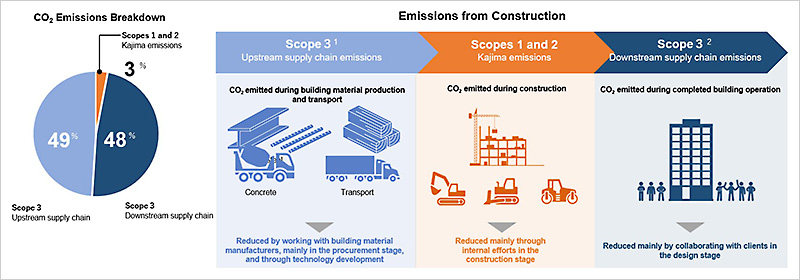
1. Main emissions are Category 1 (those arising from purchased goods and services)
2. Main emissions are Category 11 (expected lifetime emissions from relevant products)
Note: For construction work outside Japan, CO2 emitted by subcontractors during construction is included in Scope 3.
- Our Scope 1 and 2 emissions (those from construction activities and Kajima facility operation) are approximately 3% of the total.
- We are proactively implementing reduction activities for Scope 1 and 2 emissions, focusing on construction sites.
- Reducing Scope 3 emissions (those from the manufacture of building materials and the operation of completed buildings) requires collaboration with the companies concerned.
Initiatives to Reduce Scope 1 and 2 (Kajima) Emissions
KPIs and Targets
To achieve carbon neutrality by 2050, Kajima will work on energy efficiency, electricity decarbonization, and fuel decarbonization. Initially, priority will be given to the relatively more straightforward tasks of improving energy efficiency and decarbonizing electricity, with the decarbonization of fuels advancing gradually. If it is difficult to fully decarbonize fuels by 2050, offsets will be used to achieve carbon neutrality.
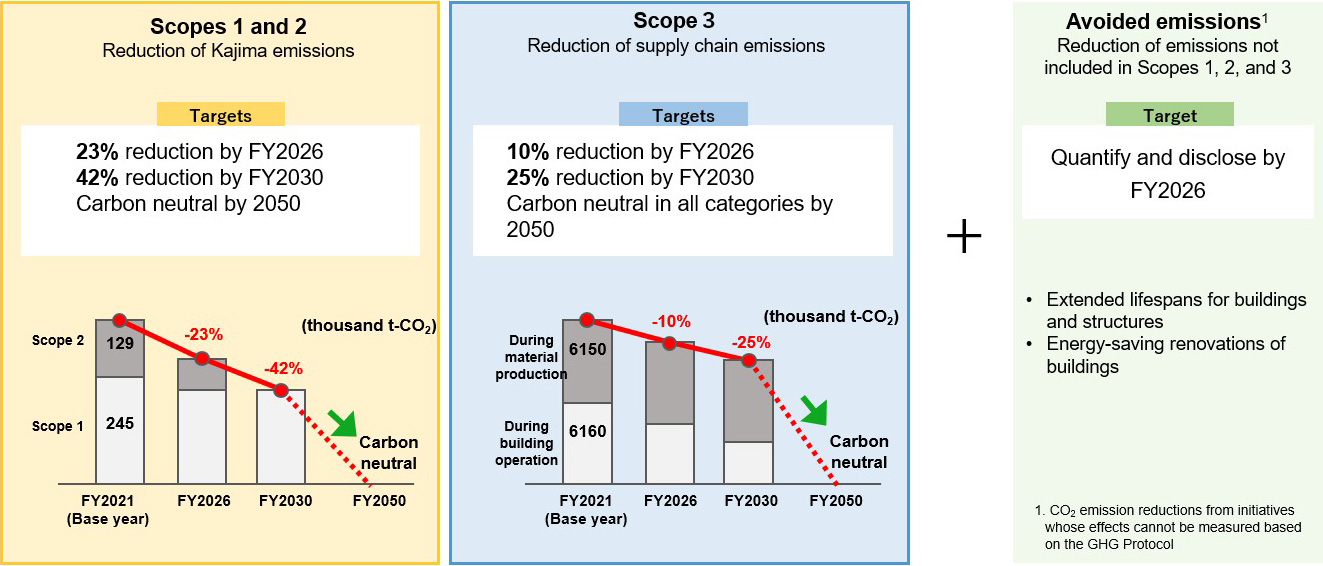
Roadmap for Reduction of Scope 1 and 2 (Kajima) Emissions
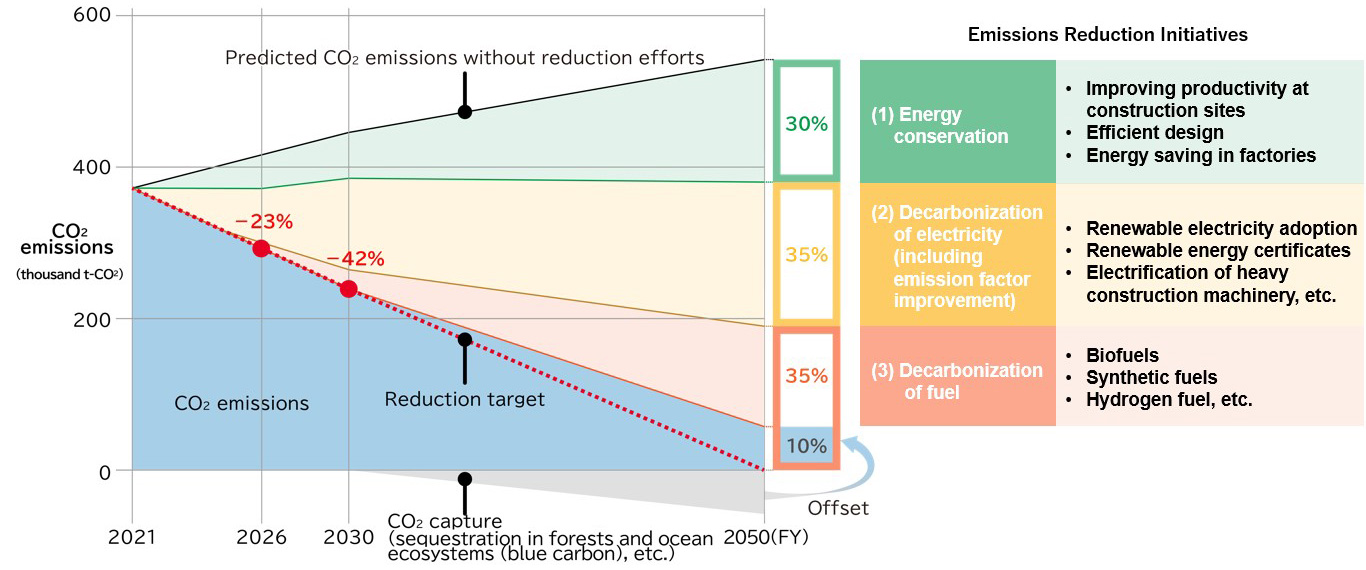
Decarbonization of Electricity and Fuel
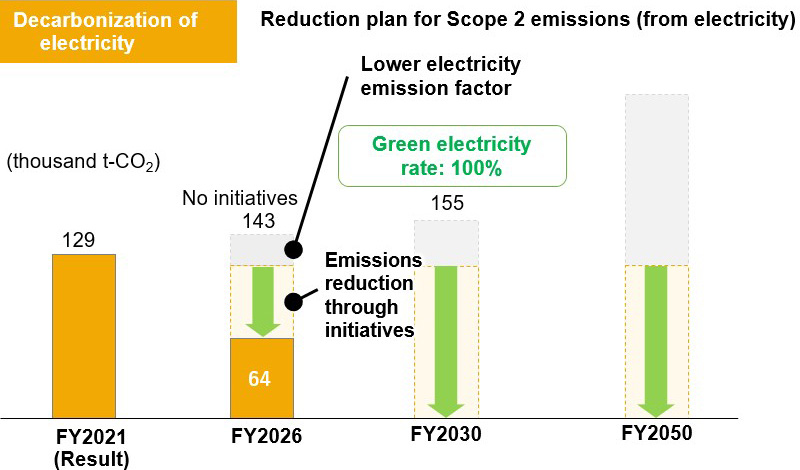
100% green electricity use by FY2030
Purchasing renewable electricity from power companies
Using renewable energy certificates for purchased electricity
- ⇒ For the future, using our own renewable energy certificates, and making direct use of renewable electricity generated by Kajima's own equipment
Investing in renewable electricity sources to cover internal power consumption in Japan
Continuing to invest with the aim of securing renewable electricity generation capacity that exceeds power requirements in Japan by FY2030
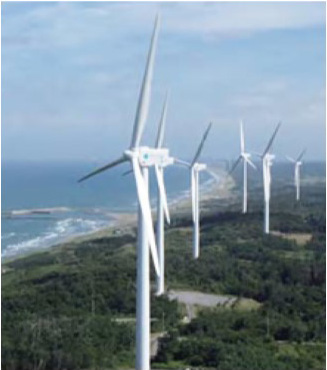
Wind turbines of Oga Wind Power Co., Ltd., in which Kajima has a financial stake
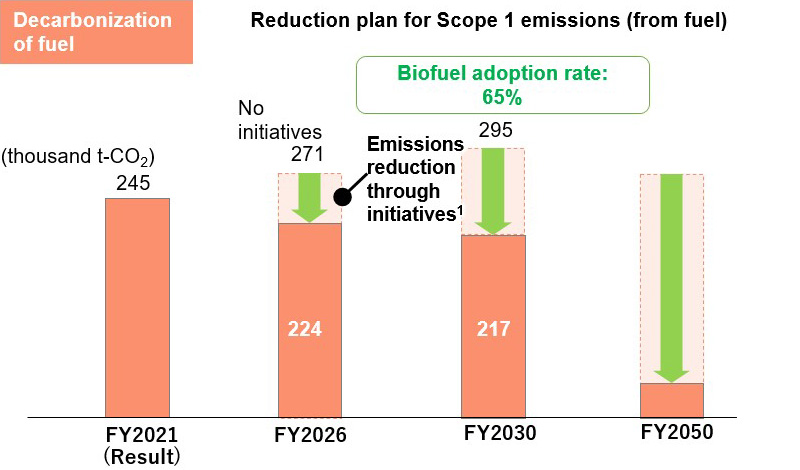
1. Includes fuel use efficiencies such as productivity improvement and energy saving in factories
Biofuel adoption rate of 65% by FY20302
Fuel to generate power
Using light fuel oil mixed with biofuel
- ⇒ Gradually increasing the biofuel rate
- ⇒ Plan to use synthetic fuel and hydrogen in the future
Adoption of an internal carbon pricing system
Fuel to generate heat
Plan to switch from Type A heavy oil to LNG with its low emission coefficient, and to utilize biofuel co-combustion
- ⇒ Hydrogen fuel adoption in the future
2. Non-consolidated Kajima target
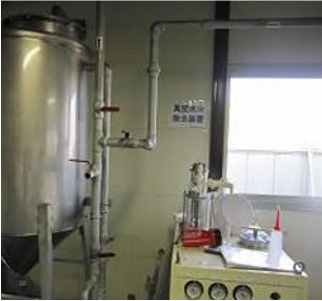
Kajima Group company Toshi Kankyo Engineering produces biofuel from waste cooking oil for use at Group construction sites, etc.
Initiatives to Reduce Scope 3 (Supply Chain) Emissions
Reducing Scope 3 (supply chain) emissions requires collaboration with other companies and will take time to implement. Therefore, Kajima will initially focus on areas where it can make efforts independently. It has identified the development and use of low-carbon building materials and the expanded adoption of Zero Energy Buildings (ZEBs) as the targets of its reduction initiatives.
Supply Chain CO2Emissions
